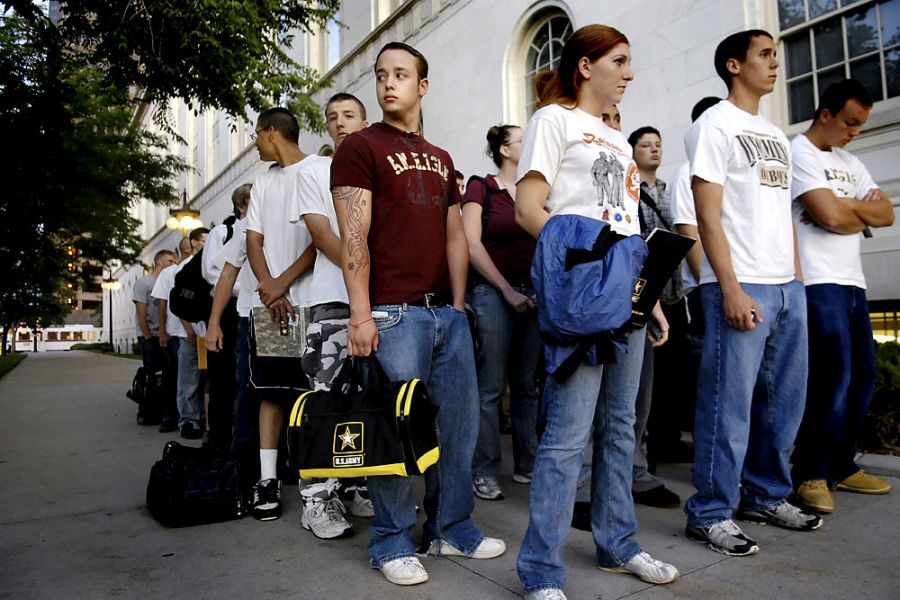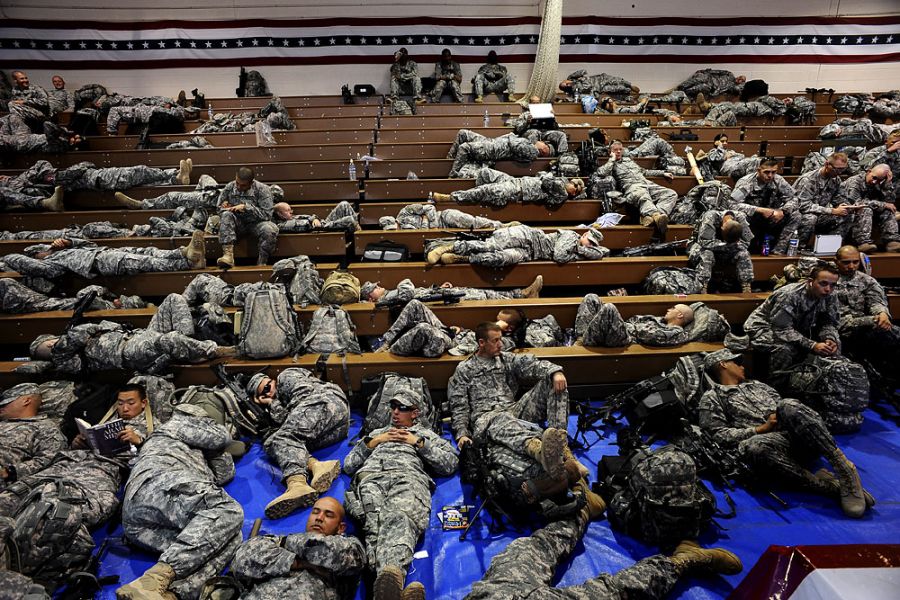
Image Credit: Craig F. Walker, The Denver Post
H/T: The New York Times
Noel’s comments this past week about the circulation of iconic images of violence and the role of affect in our reception of these images left me wondering about contemporary photojournalism and its treatment of war. In their text and blog, No Caption Needed, John Louis Lucaites and Robert Hariman have written extensively about the way iconic images, such as the photograph of General Loan executing a suspected member of the Viet Cong, circulate in public culture but what should we make of images that are less well known or that focus on the more mundane aspects of war?

Image Credit: Craig F. Walker, The Denver Post
From July of 2007 through August of 2009 photographer Craig F. Walker and journalists Kevin Simpson, Michael Riley and Bruce Finley documented the life of Ian Fisher as he enlisted in the U.S. Army, went through basic training, and served in Iraq. The series of photographs follow Fisher as he graduates from high school, says good-bye to friends and family, struggles through basic training, and serves on escort missions in Iraq. Quite a few of the photographs, however, show Fisher and other enlisted men waiting around, smoking by the side of the road, or sleeping while they wait to be deployed. The daily practice of war looks like a lot of standing around. In fact, the bulk of the action shots document Fisher's time spent in training. Moreover, the only images that capture and convey any affect focus on the emotional response of Fisher, his friends, and his family as he leaves and returns to the U.S.
This depiction of the waiting around of war seems to play off the more iconic images and cliches that have been burned into our collective memory. The photo-essay begins by focusing on Fisher's love for his country but later captions tell us of his frustration at having to dig ditches and complaints about having to pick up trash. Taken as a whole, the essay undermines many of the more traditional narratives of war--we see no transformation from boy into man. There is little focus on homosocial bonding and friendships forged through fire. Fisher's love of country slowly devolves into a lament over the tedious tasks of waging a long war.
Perhaps this portrait is able to emphasize the mundane aspects of war because the photo-journalists spent so much time with Fisher. Are these photographs simply the byproduct of extended time spent documenting Fisher's service? Or, maybe we can read this collection of images as anti-iconic. If we have become inured to the violent or iconic images, perhaps it is time to consider the daily, the dull, and the less-than-decisive-moments of war.


Recent comments
2 years 29 weeks ago
2 years 44 weeks ago
2 years 44 weeks ago
2 years 50 weeks ago
3 years 4 weeks ago
3 years 4 weeks ago
3 years 4 weeks ago
3 years 6 weeks ago
3 years 6 weeks ago
3 years 6 weeks ago